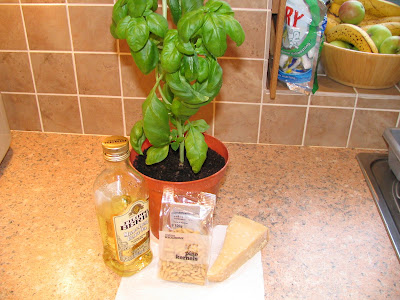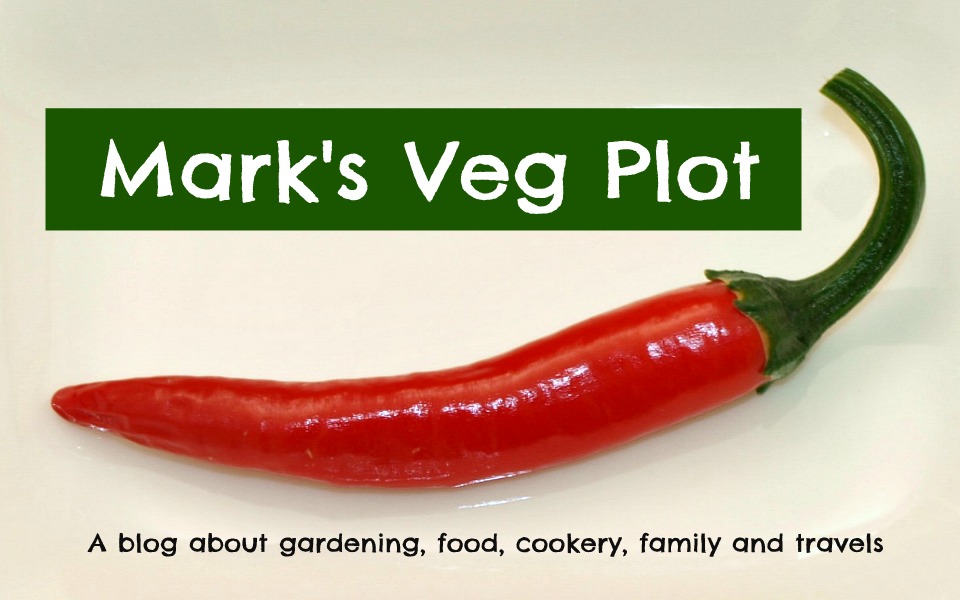 |
| Pots of basil awaiting the chop... |
Recently Jane has developed a way of preserving basil for use at other times of the year -- making it into pesto and freezing it. Normally you make pesto for immediate use. We do this too, and it's hard to imagine anything nicer than fresh home-made pesto stirred into a bowl of pasta, but if you happen to have lots of basil, why not make lots of pesto? More than you can use at once, that is.
The ingredients for pesto are essentially: parmesan cheese; pine-nuts; (or any other oily type of nut, such as hazels or walnuts), either raw or toasted; basil (or any other strongly-flavoured, but fairly soft herb), and olive oil. The method of preparation is simple: zuzz the cheese, pinenuts and basil (leaves only, not stalks) in a blender until fairly smooth, then drizzle the oil in slowly with the blender on a low speed until you reach the desired consistency, (which I would describe as "gloopy" -- fairly runny but not too thin.)
 |
| The ingredients for basil pesto |
When the pesto is made you can keep it in a jar in the fridge (in which case it would stay useable for maybe a week or ten days at most), or you could freeze it, in which case you could potentially keep it for months. Jane puts the fresh pesto into an ice-cube tray, freezes it, and then tips out the frozen cubes and keeps them in a plastic bag in the freezer. This way you can use as much or as little as you want. Just one cube of pesto added to a pan of soup in Winter can transform something ordinary and functional into a real treat. A useful fact to know if you are following a recipe is that one cube of from an ice-cube tray is 15ml in volume, which equates to one standard 15ml tablespoonful. Use five or six cubes defrosted in a small bowl, and you have a lovely dip to go with your Ciabatta.You can also make your pesto go further (and avoid taking in too many calories) by combining one defrosted cube of pesto with a 200g pot of low-fat Creme Fraiche to make your dip beautifully light.
 |
| Frozen pesto cubes |

No comments:
Post a Comment
Thank you for taking time to leave me a comment! Please note that Comment Moderation is enabled for older posts.